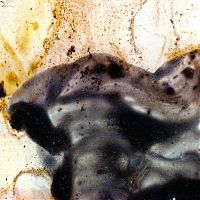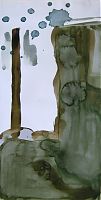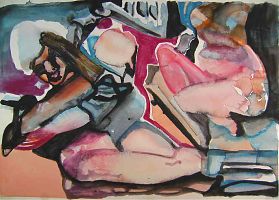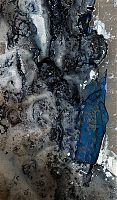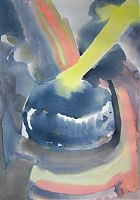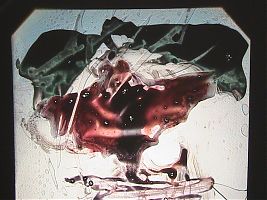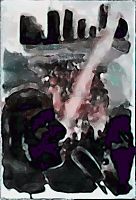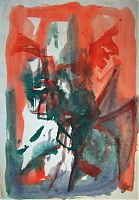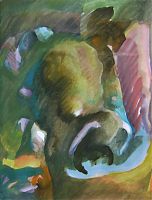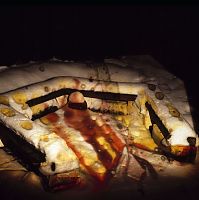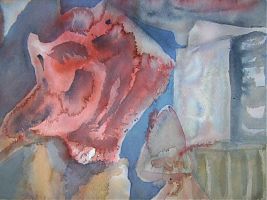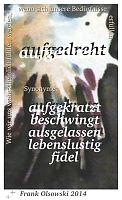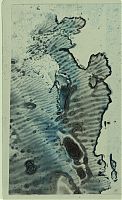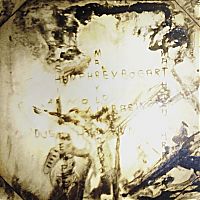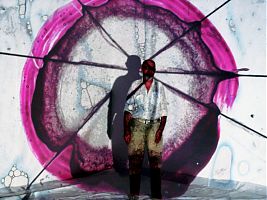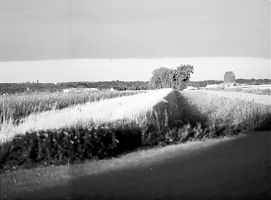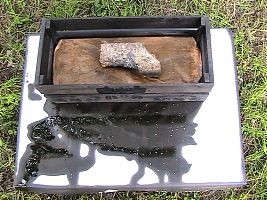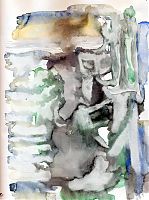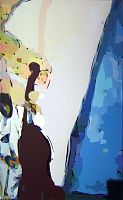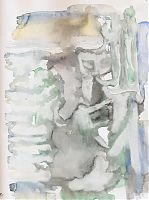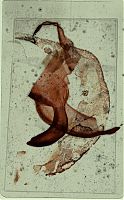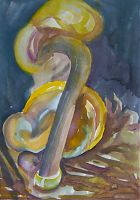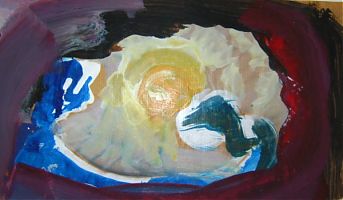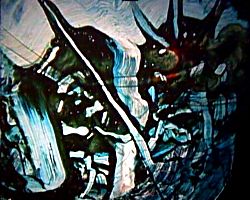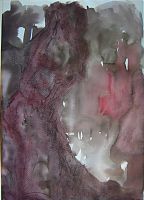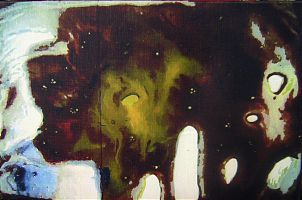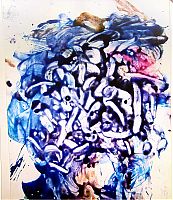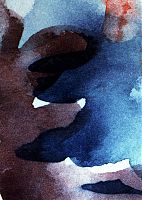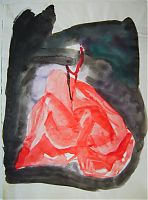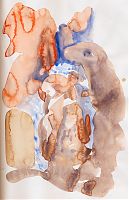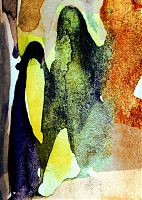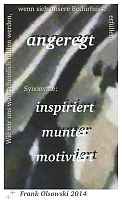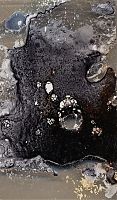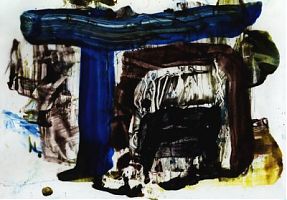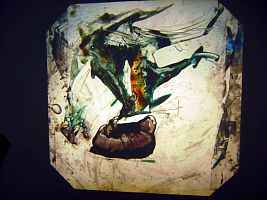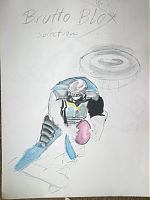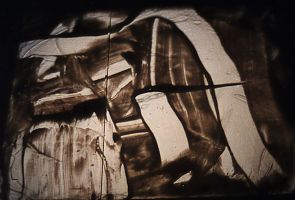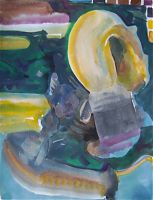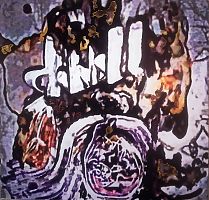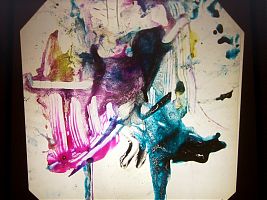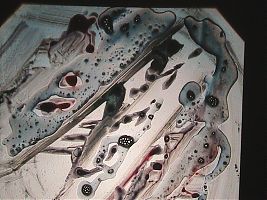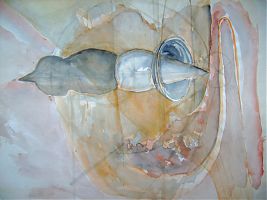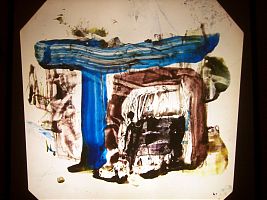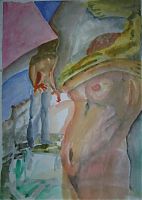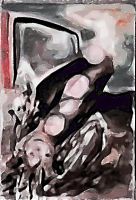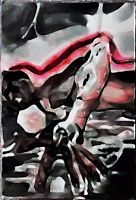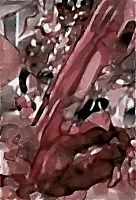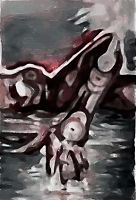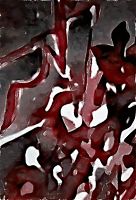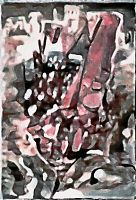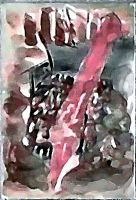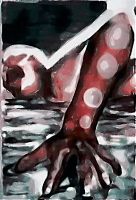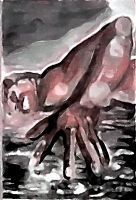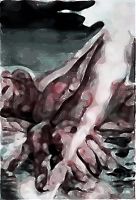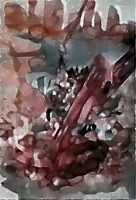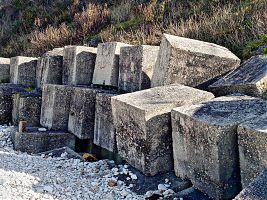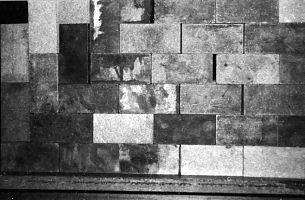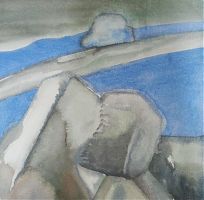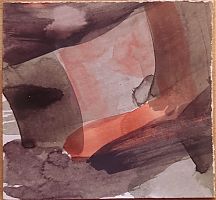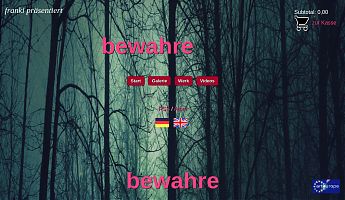Imprint: Smart City
Datum
Image sequence performance

Trabantenstadtm Abdruck einer Foliem ca 43cm x 29 cm, Großkönigsdorf 1995
The sketches and impressions of the performance Trabantenstadt – an outdated title, today I would call it Smart City – are a beautifully preserved work. The picture story with acoustic DaDa texts overwhelmed the rare audience. „Very chaotic“, which means: „I couldn’t get into it“, or „Yes, yes, interesting“, which means: „I was bored“. More intellectual viewers suspected something behind this and asked questions. But my answers didn’t satisfy them, as I hardly knew what it was all about.
As a remote viewer with the question „Housing shortage in the future“, I occupied myself in this daydream posture, which others perceived as „staring“. It was a form of meditation and I didn’t even know the word remote viewing at the time.
The images hit me as if I had opened a barrel. The wealthy or privileged will live in a huge glass-roofed shopping mall like a five-star hotel, while the others will live in high-rise blocks of flats like those we experienced in the worst phase of brutalism.
In fact, brutalism is a style of architecture, visible concrete and iron, endlessly repeating structure, battery cages gray in gray.
For me, just like for many other early middle-aged people who were not going to inherit anything, the practical question arose as to whether it wouldn’t be better to save up for a condominium, perhaps even build one myself, at great sacrifice of course. The housing shortage was simply not going away, it seemed to be getting worse and worse. In the mid-90s, a good apartment cost a third to a half of a median salary.
Artificial shortages are created for those living in Brutalism. Sometimes the running water is cut off, then there’s no electricity, food is scarce – and people can’t get out of the area. That was shown to me.
I then designed the Trabantenstadt performance and made preparations to buy an apartment or house.
It was actually supposed to be the connecting piece to the performances ZeroCollage and Descamisados. The adaptation was to take place as soon as Trabantenstadt could be performed routinely. However, this did not happen. The story boiled down to a figure that is drawn and pressed to the floor. The occupants are externally recognizable by a 6th finger. At first it was a third arm, then a third eye, but to me it seemed too thick, a 6th finger would do and felt more correct.
At the time, I had no idea that the Bible described the descendants of the fallen angels as having 6 fingers, nor was it believable at the time that people were fitted with machine parts or given a chip, as in science fiction stories. That was before Windows98-Pentium III, so what I showed was quickly judged to be plagiarized from some science fiction novel, cyborgs for example. As already described, I couldn’t really say anything about the intention myself. No wonder, today this performance would probably be understandable for everyone, as it only shows what is possible today and we all suspect what it is all about.
Here I show you one of the sketches on the subject.
Year of creation: 1996 Size: ca 25cm x 18cm Watercolor, watercolor pencil on paper 16 unique pieces
weitere Artikel zum Thema Descamisados

